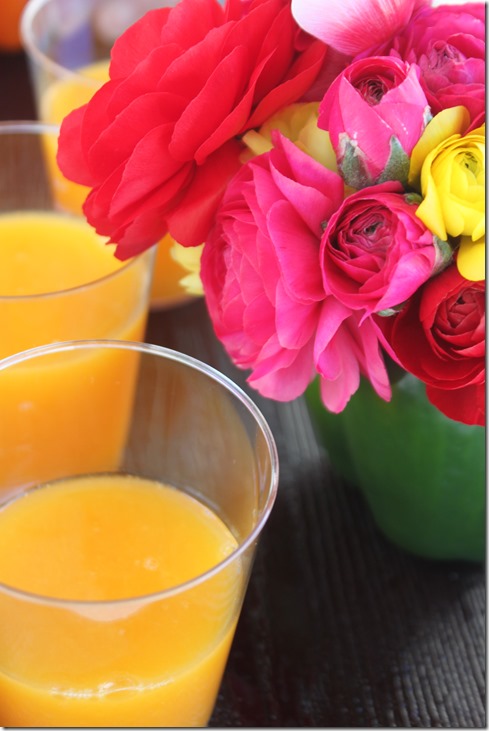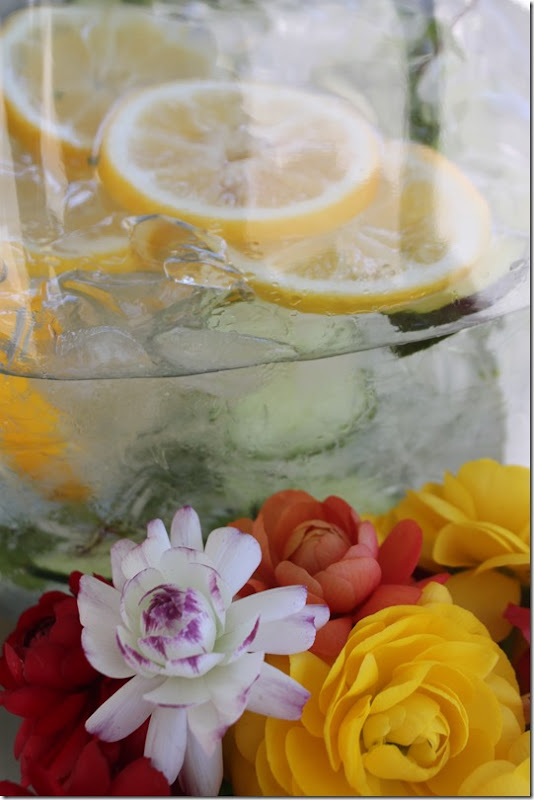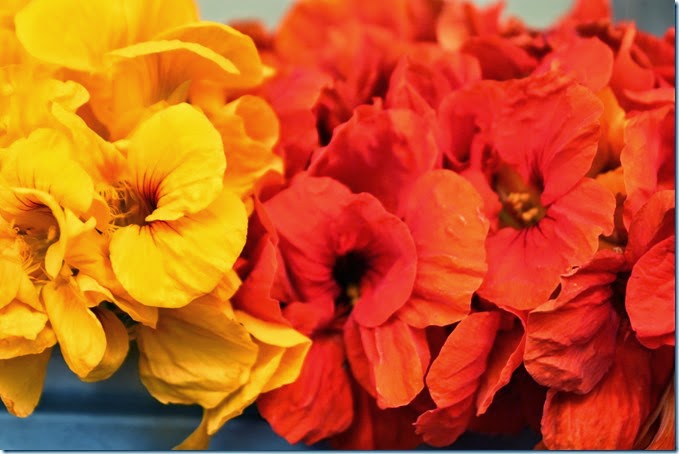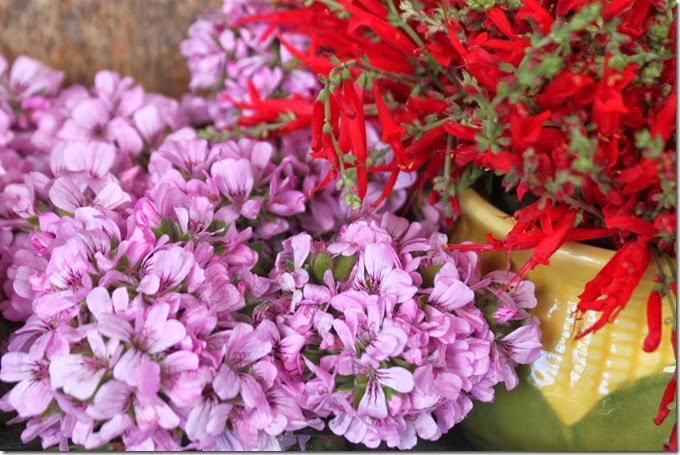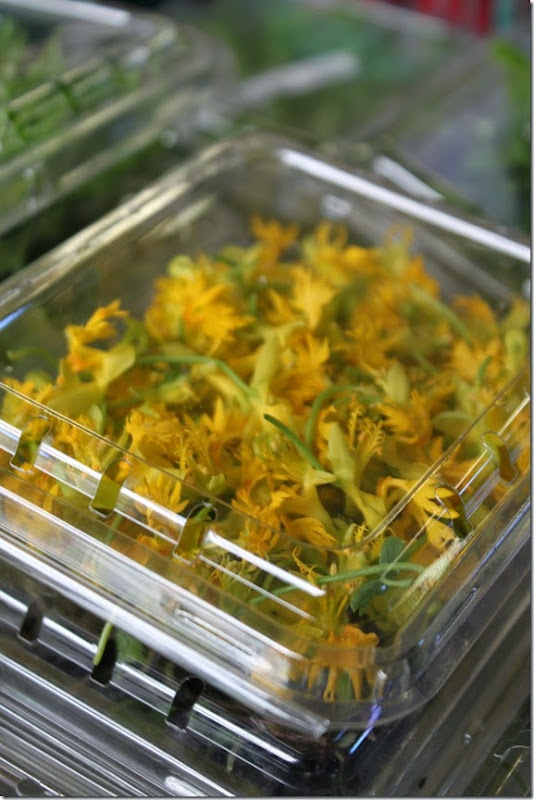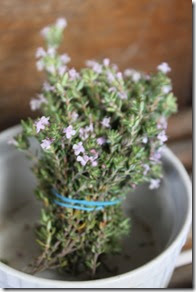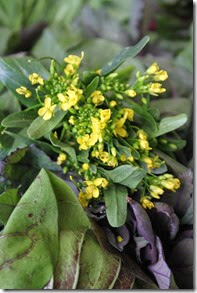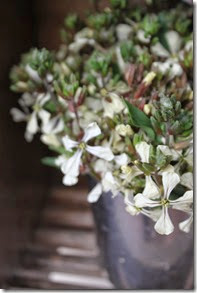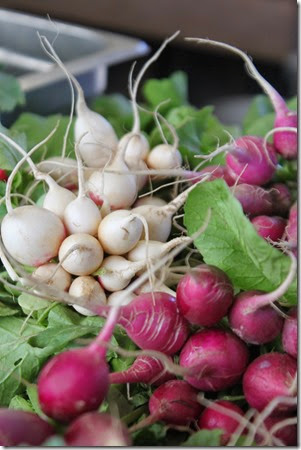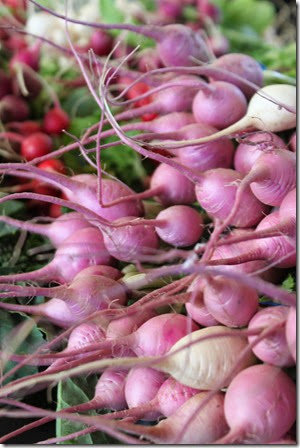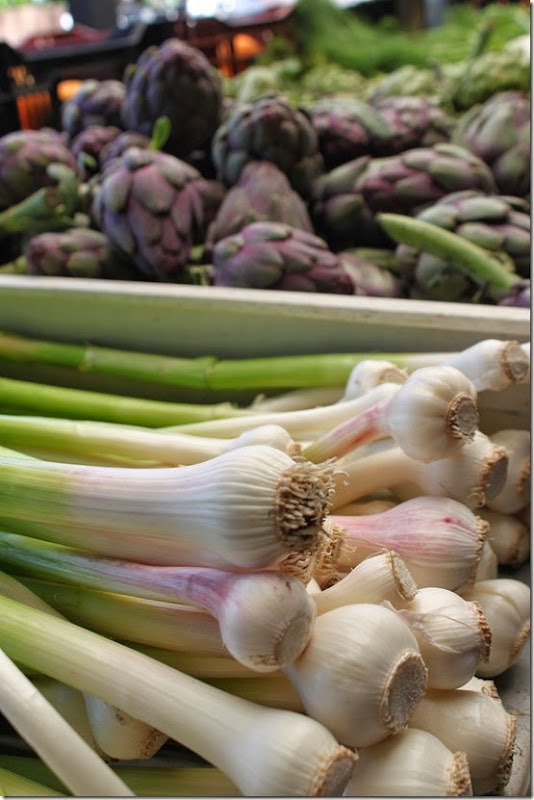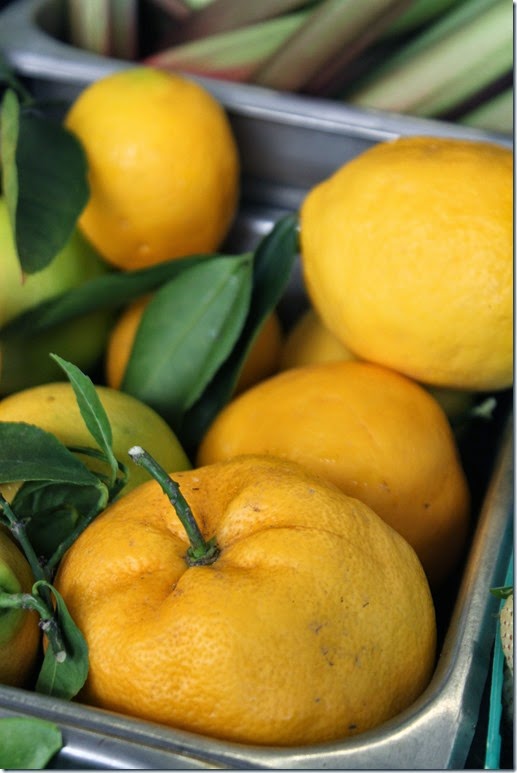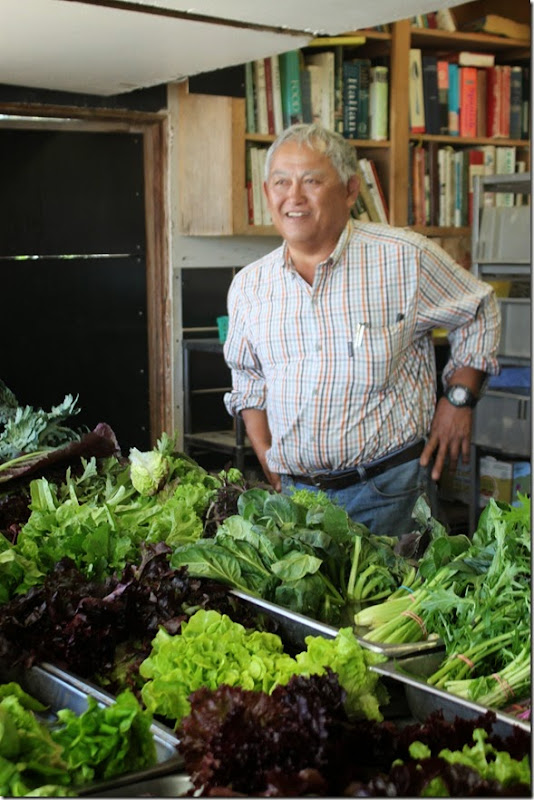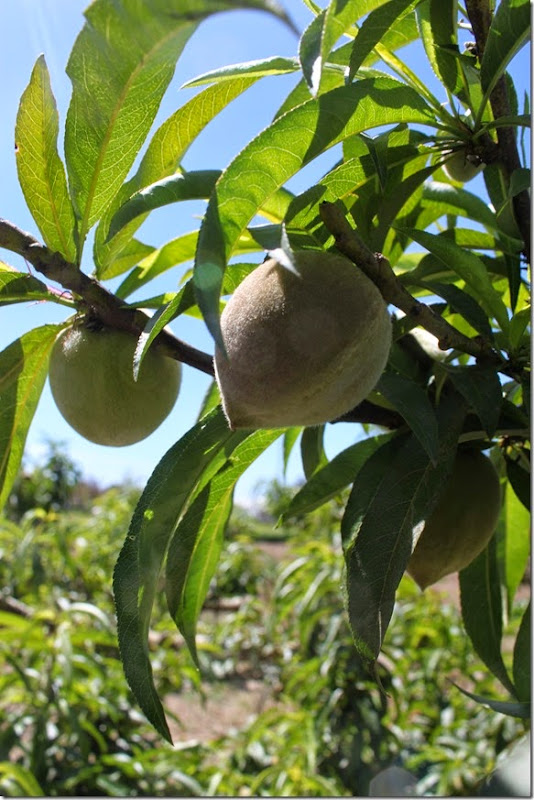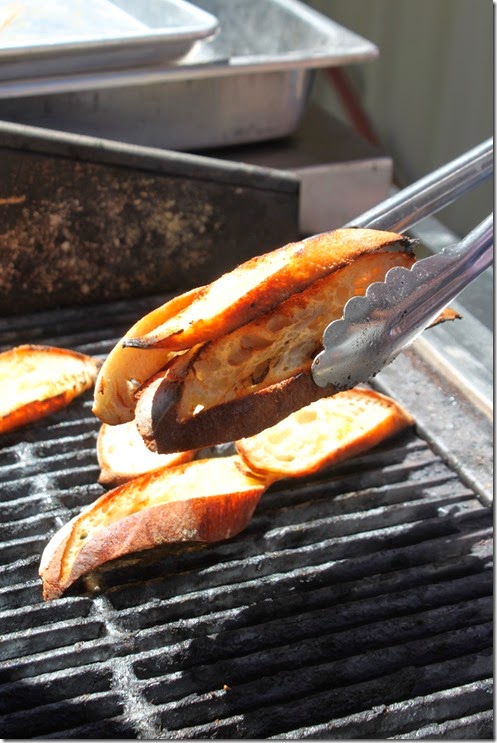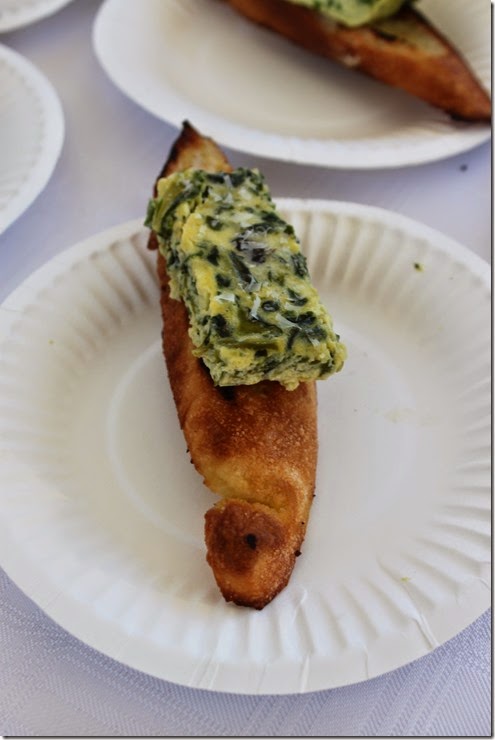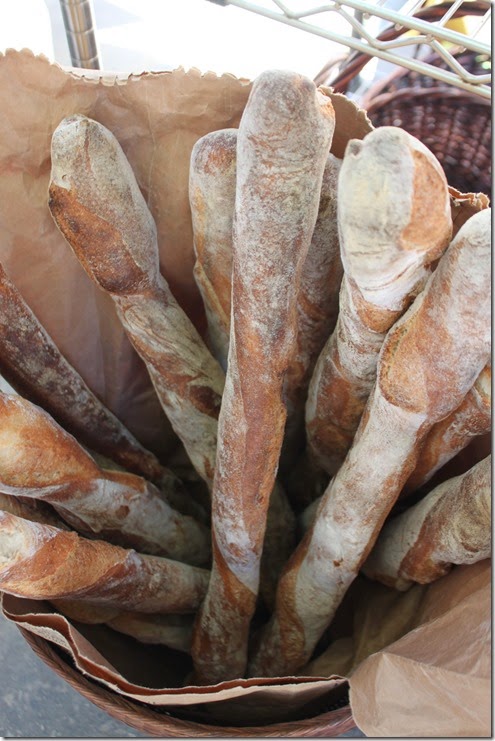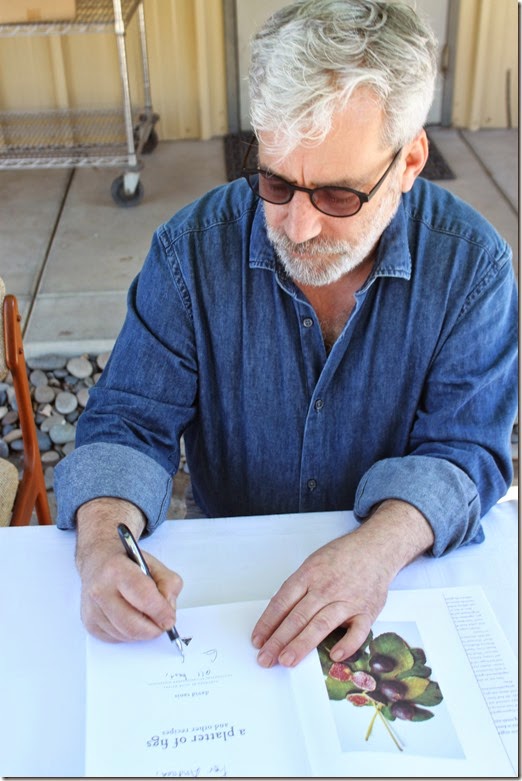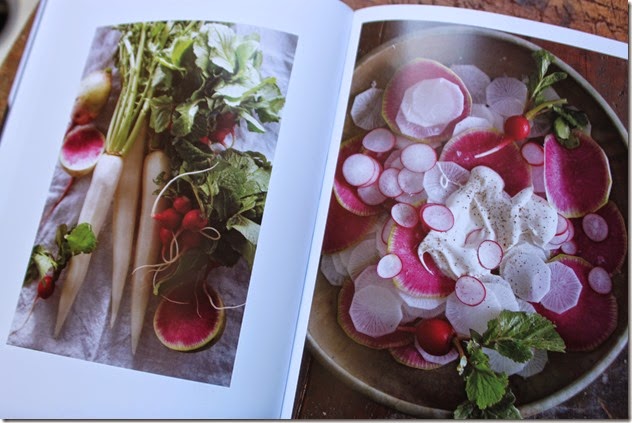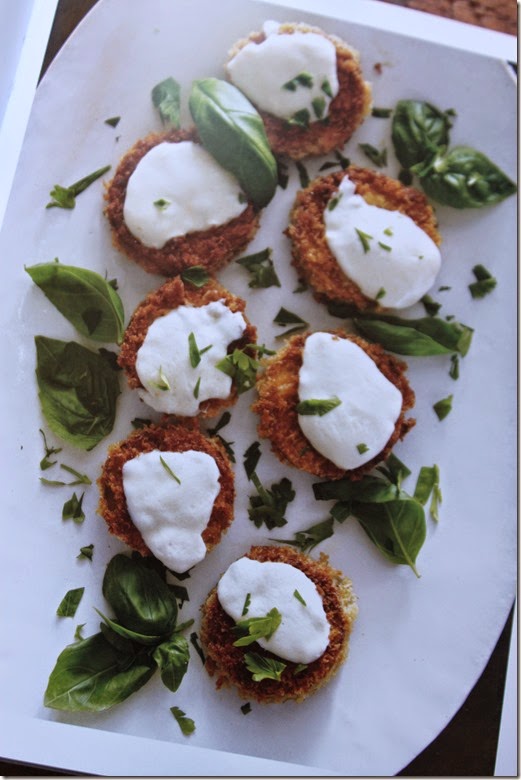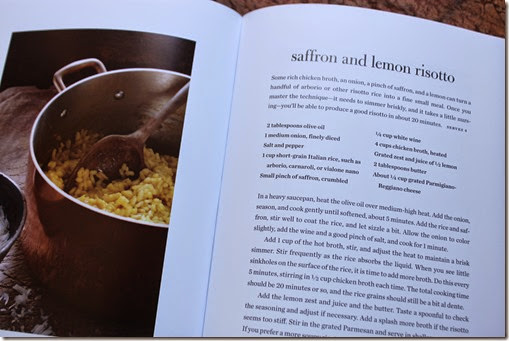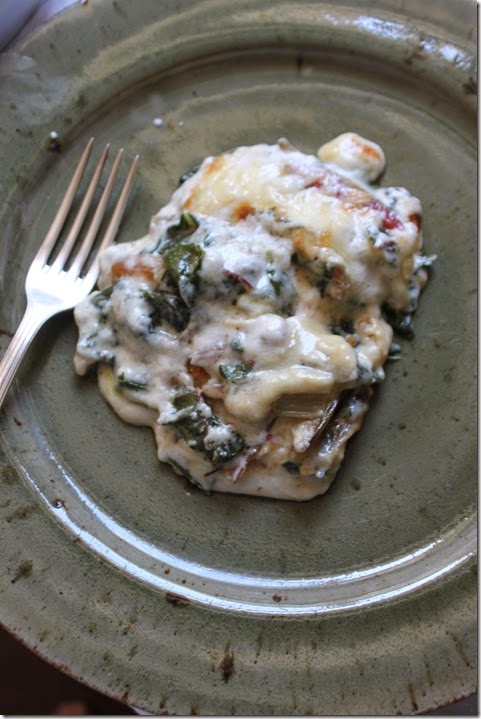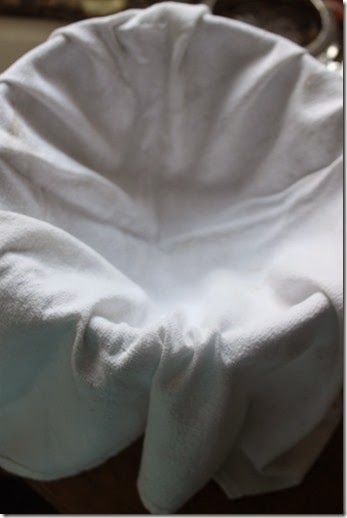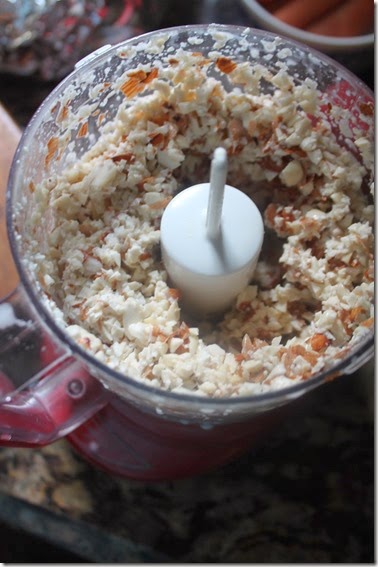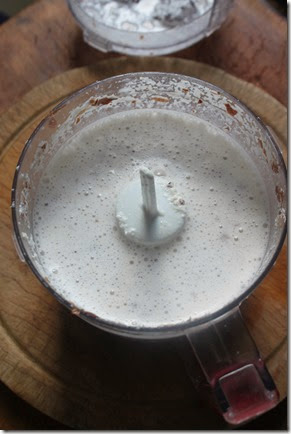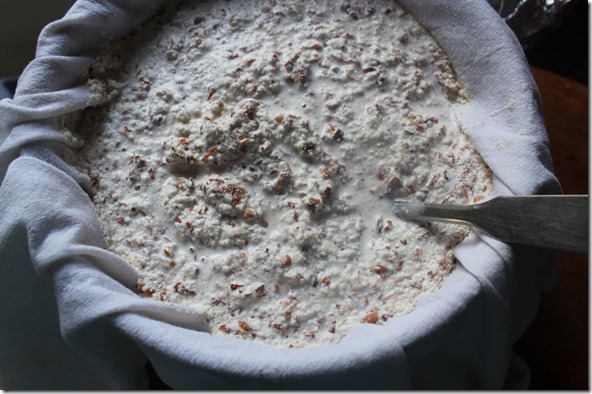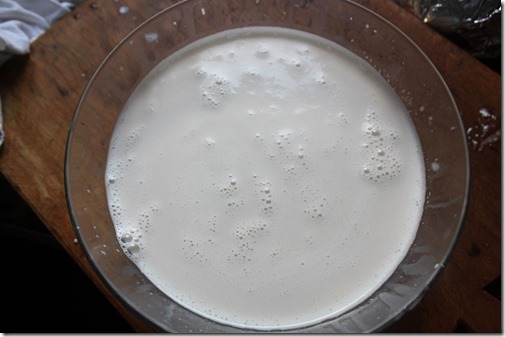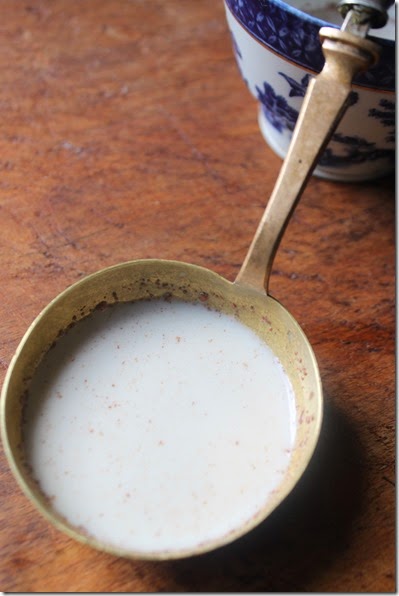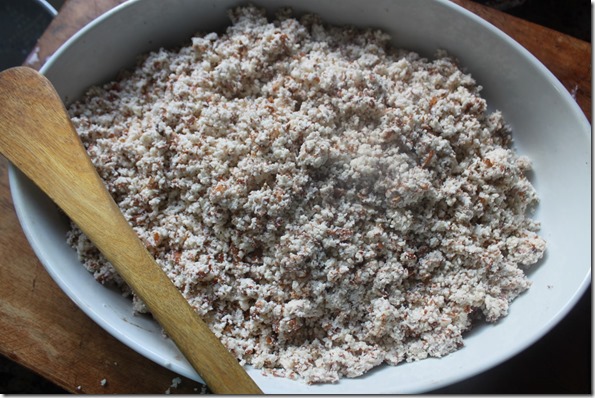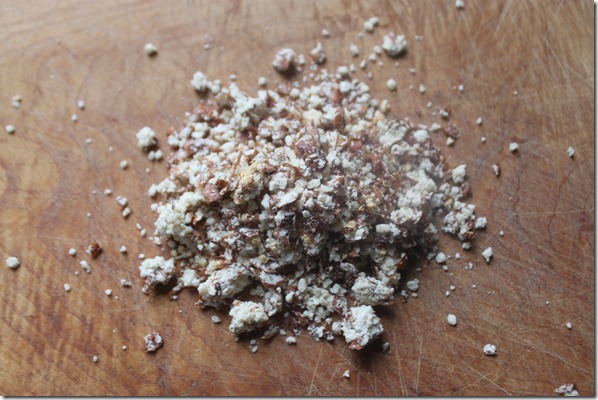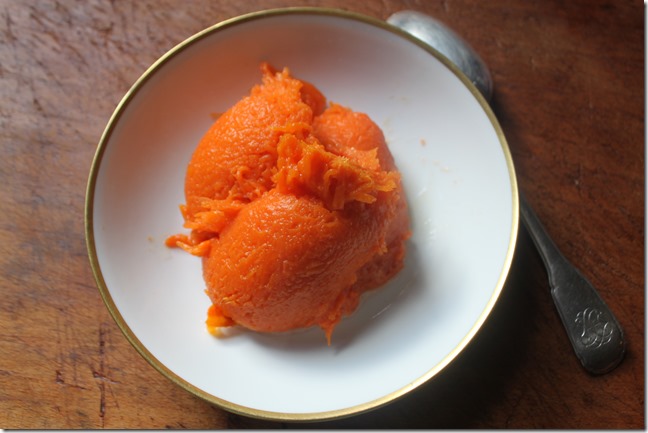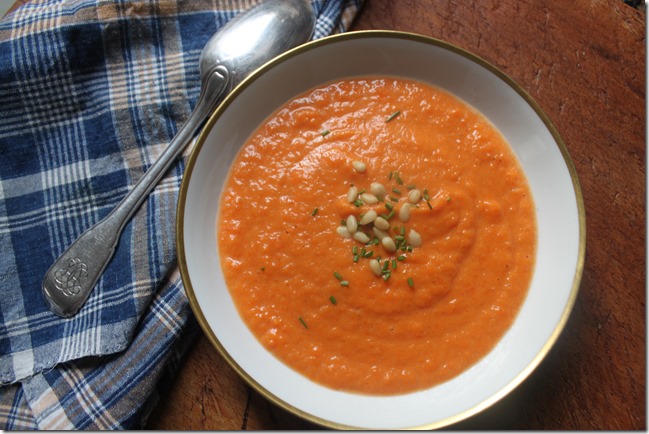I have made no secret of my love of the Chino Farm in Rancho Santa Fe, where I can find the freshest and finest produce in the world, often reminiscent of French markets, with a distinctly Californian flair yet with strong influences of Japan and Italy. There is no place like it anywhere in the world. Yesterday I was there for a book signing for Chez Panisse alumnus David Tanis. The event was relatively low-key, providing an opportunity to chat with one of this country’s best chefs and food artists. And it was, quite simply, a quiet riot of color and the abundance of spring.
Throughout the farm stand and the service & signing tables, there was a glorious harmony of produce, flowers and color. As usual, nothing “too much,” it was, of course, perfectly perfect…
Flowers were everywhere, in small “vases” carved from bell peppers in various shades. And in the stand itself, one could find an impressive lineup of edible flowers: big, beautiful nasturtium~
The leaves too….which I can just imagine on a plate with a small crotin of fresh goat cheese on top~
Rose geranium and flowering sage made a great visual contrast; these geranium flowers found their way onto my whipped cream-topped flourless chocolate cake last evening, and were delicious and beautiful~
Another variety of nasturtium was also available, along with a wide assortment of micro greens, calling to finish a big beautiful salad~
Small vessels held flowering French thyme, broccolini (I think) and arugula flowers~
Perhaps in a nod to the cover photo of David’s new book, there were beautiful varieties of radishes and daikon~
The sight of small violetta artichokes, very fresh fava beans and fresh or “green” garlic had my mouth watering for some Italian food….
I wait for “green” garlic all year, since I much prefer it to the stronger and more mature bulbs. Last night we had this semi-raw with a quick toss of Cremini mushrooms over JW’s chicken and rice. As the short season matures, the white ends may be more bulbous; I’ll chop and fry those small cloves with French fries, and my family loves the slightly garlicky fries as well as the crispy little cloves. If you live in LA, my favorite farm for fresh garlic is Johnny Suede, who sells at the Sunday Pacific Palisades farmers market. He picks the garlic fresh, with beautiful long green tops that will look like a rooster’s tail coming out of your basket. But in San Diego, I’m getting my fresh green garlic at Chino~
Starting at one end of the stand and moving down the line with the crowd, there was one fresh treat after another. I could fill so many baskets here!
Tom Chino was there, in front of the beautiful greens. I’m constantly admiring their vast collection of cookbooks and foodie reference books on the wall behind as I shop. I’m not a big consumer of cookbooks, but most of those I own have come from Chino signings. And I love and use every book I have bought here.
And in the adjacent field, we could catch a glimpse of things to come…summer’s stone fruits are on their way~
Behind the stand, we watched as the crostini was toasted perfectly on the grill~
to be married a moment later with a slice of David’s spinach cake…this was simple and very delicious; I had three, thank you~
The warm spring morning and the casual pace allowed me time to chat with some of the Farm’s friends, who seem to be at every event. Thanks to Shona and Ian for the amazing orange juice from Shona’s Father’s grove and the chilled lemon-cucumber water. I had several glasses to wash down the crostini~
And then after a bite and a refresher, I was off to browse David’s books. This is his latest; One Good Dish.
Right next to the books were a large basket of authentic and rustic baguettes. I’ll be visiting this bakery soon, and one came home with me for Sunday dinner;
In the end, I bought not one, but two of David Tanis’ books. I’ve been wanting A Platter of Figs for a long time, and now I’ve got a signed copy. I’ll be making lobster risotto and green lasagne with greens very soon. It’s the classics taken up a notch. I really love the intro, as he tells of making dinner in Venice, at home, with friends, for a birthday. It reminds me a lot of eating in Beaune, where I love to say we are either talking about what we will cook, carefully shopping for it, preparing it, eating it, or talking about how great it was. I share (shall I say embrace) his philosophy that eating at home often trumps eating out. That Great Food is made at home in much of France and Italy. And in places like Burgundy and Brittany, Rome or Paris, the locals know their seasons, what is great and what is best, by the season and by the week, and just where to buy it. Can we eat like that here? Yes. Great, great book….
A moment after David signed my books, a girlfriend came running up to the table to ask me if I had indeed “served the girls rabbit” during their recent visit with us in Beaune. Why yes, yes I did, I said, while being slightly embarrassed in front of Le David. “The girls” are chefs, and lapin Dijonnaise is one of our favorite meals in Burgundy. Something magical happens when you combine mustard, white wine and rabbit. How was I to know these chefs were vegetarian? And there were plenty of other dishes on offer that evening, including seafood. But reading David’s book later that day at home, I was so glad to read his words…”rabbits are hideously misunderstood in this country…” as an interesting intro to a brief discussion of rabbit. David mentions in the book that every chef has a rabbit story. I remember sitting at the Alliance in Paris, telling my French teacher that we don’t eat the Easter Bunny, it brings us chocolates and eggs… she was so puzzled by this concept. Fast forward twenty years, I love to bring visitors to the market at Louhans in Burgundy to show them the live poultry and animal market, but most importantly the reverence and respect and care that goes into raising these animals, including rabbit, at small farms. No different than a chicken. Love to see rabbit addressed in an American cookbook, though I never serve it here.
Meanwhile, in One Good Dish, I can find a lot of inspiration. There are plenty of platter-worthy family dishes in the book, but also a great number of small items that I consider great food gifts: condiments including various sauces, Italian Hot Pepper Oil, Candied Grapefruit Peel, jarred cheeses and pickled ginger. I am always looking for great food gifts, and David has given me some fresh ideas that I know my friends and family can use. I also can’t wait to make his dish radishes à la crème, in Laguna and later in Beaune, with local crème.
The breaded Eggplant Cutlets will be great snacks for family this summer on the patio, or perhaps for a farm to table dinner~
I love the exotic elements that have been incorporated here, like Saffron and Lemon Risotto.
But at noon today I chose my first recipe from the book according to what I had on hand: rainbow Swiss chard and green garlic. I made David’s Swiss Chard al Forno, but used a little French quatre-epices instead of nutmeg, and Comté, since that was what was in the fridge. I like that this recipe uses the chard stalks, which usually end up in the compost. And my family has never met anything with Béchamel that they didn’t devour.
Two of my neighbours happened to stop with their dog by as the gratin was finishing. And wouldn’t you know it, the three of us ate the entire dish, in my kitchen with the Dutch door open, with a glass or three of wine and lots of laughs… it was supposed to last until dinner, with a filet of sole, but so much for that, we devoured the whole thing, spoon by spoon. It’s one of those dishes you just can’t stop eating….
This is going into my rotation and will be featured at Easter with leg of lamb, though I am going to have to make several dishes of it. I also really love that I can set it up ahead of time and pop it in the oven as guests arrive. It was soooo good. Of course it was, it’s by David Tanis…
As always, thank you Chino Farm for hosting another lovely event. If you are looking for a little cooking inspiration, do track down David’s books or his NYTimes column. I’m looking forward to trying more of these recipes this spring and summer here and in Beaune.
